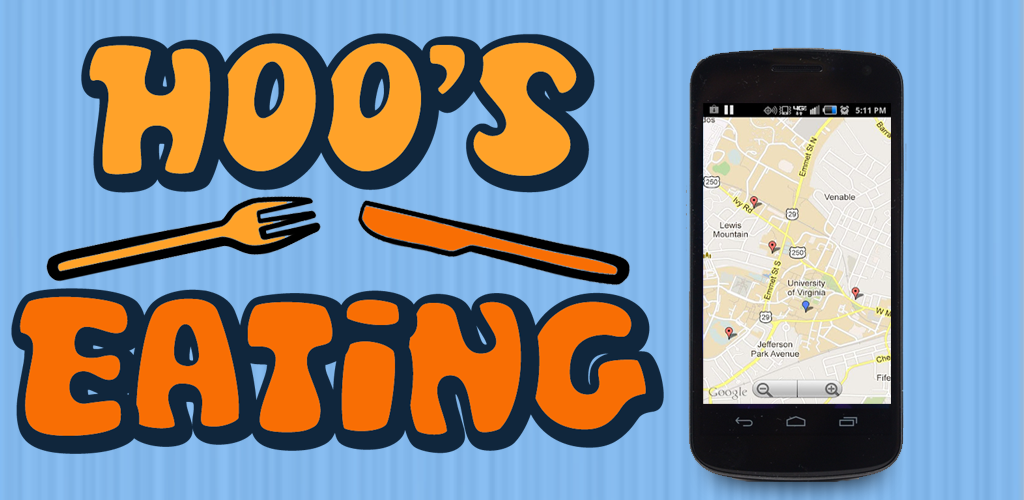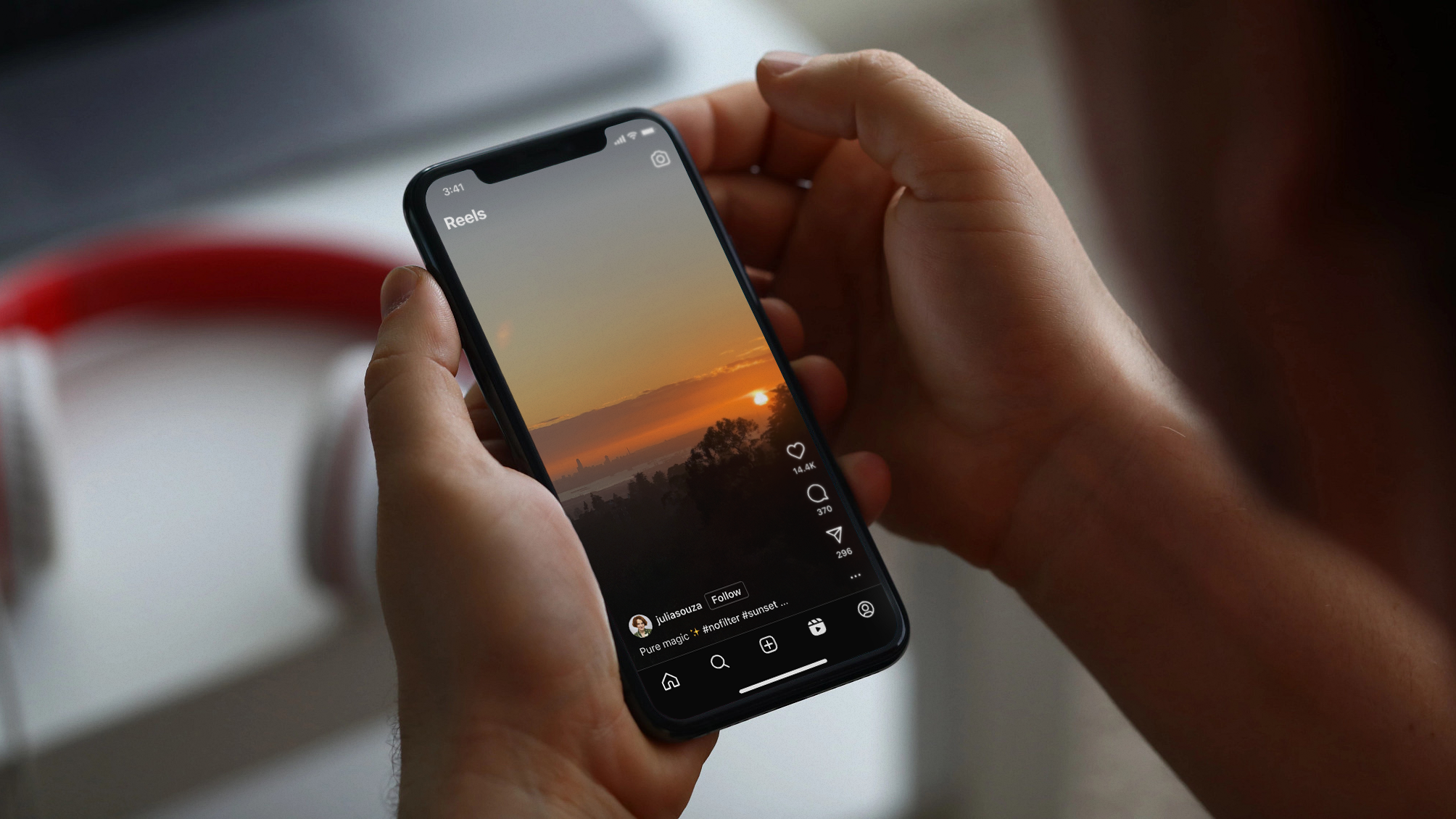
Reflections on 10 Years in Tech
This summer I am celebrating a significant milestone in my career - a decade in the dynamic world of software. As I prepare to complete a year-long sabbatical filled with exploratory travel with my wife, it feels like a natural and opportune time to introspect and reflect on my professional journey.
Early Foundations: Learning by Building
In my college days, before stepping into the professional tech sphere, I embarked on a practical journey of discovery by creating an app called Hoo's Eating. This app was designed to serve the specific needs of my campus peers, connecting hungry students with student organizations offering free food.

Original banner from Android Play Store listing for Hoo's Eating (no longer available)
Taking the lead on designing the UI and developing the iOS client, I enlisted the help of a close friend for Android client development and backend services. In just a month's time, we attracted over 1000 organic users – a success that solidified my belief in my ability to create products that meet real demands. The hands-on experience taught me more about real-world applications and design principles than I could have learned from textbooks or lectures alone.
Lesson #1: You Won't Learn to Build Without Building
The creation of Hoo's Eating was not just a project; it was an education in itself. This experience vividly demonstrated the power of hands-on learning, and how much more I could gain by building things versus only studying concepts. While the app eventually hit a roadblock due to the cost of maintaining up-to-date event data, it served as a critical stepping stone in my career. The collaboration, innovation, and problem-solving skills I gained were instrumental in shaping my future in product management.
This foundational experience was a lesson in the power of learning through doing, equipping me with both the confidence and the practical skills I needed as I transitioned into the professional tech world. As a new graduate entering the industry, the hands-on knowledge I gained from building Hoo's Eating was not just a line on my resume – it was a core part of my preparation for a successful career as a technical product manager.
Years later, this same lesson applied as I worked to learn more about Deep Learning. No number of Youtube videos gave me the level of understanding that implementing neural network architectures myself did.
Genesis: Microsoft Azure
Armed with a fresh Computer Science degree, I began my career as a Program Manager at Microsoft Azure in 2013. I was assigned to the Media Services team, plunging into the fast-paced world of cloud video. This was where I learned the ropes of building and managing cloud services on a massive scale, and the intricacies of video encoding and streaming technologies.
Lesson #2: The Power of Voicing Ideas
In my first few months at Azure, I participated in a hackathon where I was introduced to a research technology enabling full-text search within videos based on speech recognition and indexing. Our demo was an iOS app where you could search for a word or phrase to jump directly to the point in a video where it is spoken.
Seeing this novel experience amazed me, and despite only being a few short months into my career, I mustered the courage to speak up and advocate for it in a 1:1 with my manager. At the time, we did not have staffing or expertise in speech and language processing, being a team focused on media transcoding and delivery. Nonetheless, I volunteered to bridge this partnership between Microsoft Research and our product team. I took on the risk and additional work required, including late-night meetings with our research team in Beijing and numerous security and compliance reviews to officially support this as an Azure offering.

One of the web-based demos I built for the 2016 NAB conference.
After about a year of work, we launched Azure Media Indexer, which became a large financial success. This spearheaded an entire suite of Video AI capabilities like Video OCR and automatic summarization, transforming our offerings from a pure media transcoding/delivery service to a broader intelligent media platform.
As a fresh graduate on an experienced team, it’s easy to shy away from bold ideas. However, I realized I could identify opportunities others had missed and bring an outsider's perspective. By confidently advocating for a speech recognition product, despite the risks, I was able to convince my manager to take a chance on me. Azure Media Indexer's launch validated the power of voicing creative ideas, regardless of job title.
Lesson #3: Technology Alone is Not Enough
As a recent computer science grad, I naively assumed that the best technology equated the best product. Since this speech recognition demo already existed in research, I was perplexed as to why it wasn’t yet a product, given the clear opportunity to deliver value and develop a business.
However, I soon learned superior technical capabilities alone are insufficient for success. While the research represented cutting-edge innovation, it was integrating the capabilities with the security and compliance aspects of Azure's media pipeline that enabled a differentiated offering. Simply having the algorithm was not enough. It required cross-team collaboration to build a compliant, scalable product on Azure infrastructure.
This experience taught me that technology on its own is only one piece of the puzzle. Delivering successful products requires bringing together expertise across security, operations, research and product development.
A New Chapter: iStreamPlanet
After an enriching experience at Microsoft, I joined iStreamPlanet, a pioneer in live broadcasting and streaming. There, as a Senior Technical Product Manager, I gained firsthand experience with the immense pressures of delivering high-stakes live events like premium sports.
My team owned the "Source Ingestion" and "Live Transcoding" systems, bringing in satellite and fiber feeds, transcoding them with our proprietary encoder, and delivering streams to our publishing team for delivery to viewers. With brands like the NBA and NCAA relying on us, even brief outages could mean millions missing a game-winning moment. This role taught me to perform under intense pressure and engage with customers to understand their needs.
Lesson #4: Balance Innovation with Continuity
In my early days, I found out that we desperately needed to migrate from our legacy transcoding system due to the operational burden, upgrade difficulties, and poor scalability. This presented a classic dilemma of software systems: to rewrite or to iteratively improve the system. Naturally, customers resisted any change to our core products to avoid issues, while engineers pushed for a full rewrite to reduce support costs.
After some unsuccessful rearchitecture attempts, we spun up a team to build a minimal next-gen transcoder focused on simple scenarios. This allowed us to dedicate most resources to supporting legacy customers, while rapidly iterating the new system. I learned managing change requires artfully balancing innovation with stability for critical systems. This taught me to serve as a bridge between customer demands and engineering priorities when managing critical systems.
Broadening My Impact: Meta
In 2019, I joined Meta (then: Facebook) as a Technical Program Manager, drawn by the opportunity to work on consumer products at scale. Still focused on video, I joined the Video Infrastructure team, building components and services to support video across Facebook, Instagram, Whatsapp, and more.
Lesson #5: Metrics Don’t Always Tell the Full Story
I built a competitive benchmarking program, procuring software, hardware, and services to analyze our video user experiences. We benchmarked key scenarios on real mobile networks with a global pool of devices across many countries.
Initially, I questioned why intensive benchmarking was needed alongside our extensive metrics. However, I quickly realized metrics lacked visibility into end-to-end experiences at our scale. Benchmarking provided an external view, uncovering several potential performance improvements. In an area where 1% gains were significant, we identified multiple 5%+ boosts to key metrics correlated with user delight!
Engineering teams grew eager for benchmark studies, using insights to guide investments. This demonstrated the importance of real-world validation to augment analytics.
Lesson #6: Persuasion can be Key for Executing on Long-Term Visions
Another major initiative I led was driving the shift to high dynamic range (HDR) video across our apps. This required close collaboration to ensure full end-to-end ecosystem readiness across the media supply chain. (Read more on the Meta Engineering blog.)
Pioneering an emerging technology forced me to align stakeholders and overcome skepticism. Convincing creators, devices, carriers, and even internal product teams to adopt HDR was essential — but difficult. I had to persuasively convey HDR’s long-term potential despite nascent adoption. To prove our vision, we launched an experiment delivering HDR and non-HDR videos in a simple product surface. The clear metric lifts demonstrated HDR’s impact, helping justify the incremental work required.

HDR video on Instagram and Facebook Reels
Seeing the first HDR videos launch after months of coordination was incredibly rewarding. It validated my ability to execute on a strategic vision in the face of complexity and doubt. Getting partners aligned on an unproven technology taught me the importance of persuasion, persistence, and demonstrating value.
Lifelong Learning: The Drive to Grow
While my work exposed me to cutting-edge technology, I recognize the importance of continuous learning. To stay tuned into developments in AI, I’ve invested time outside of my employment to expand my skills.
In 2018, I took the Practical Deep Learning for Coders course at fast.ai. In 2022, I earned several certifications from Kaggle in machine learning and computer vision. Most recently, I completed a Coursera course on Generative AI with LLMs, studying techniques like large language model pretraining, fine tuning, and domain adaptation in order to better understand systems like GPT and PaLM.
Lesson #7: Make Time for Learning Outside of Work
Being intentional about ongoing education has been indispensable to my growth, even with a busy schedule. It’s easy to focus solely on execution, but I’ve found immense value in learning — whether structured courses or research. With rapidly evolving technologies, continual upskilling is essential. Continual learning enables me to stay engaged with the field's rapid changes.
By staying up-to-date on the latest LLM developments, I've been able to support friends' startups, give advice, and prototype interesting projects myself. Investing in myself keeps me engaged and multiplies my impact.
Final Thoughts
I'm extremely grateful for the opportunities and experiences I've had in my first decade in technology. It's been an incredible learning journey alongside talented peers. While an exciting sabbatical year lies ahead, I look forward to discovering what my next chapter will bring. I hope to drive impact by enabling transformative technologies and products.
Most importantly, I want to carry forward the lessons from the first 10 years. Taking bold risks, advocating for change, and embracing constant learning will be the keys to meaningful contributions in the next phase of my journey.